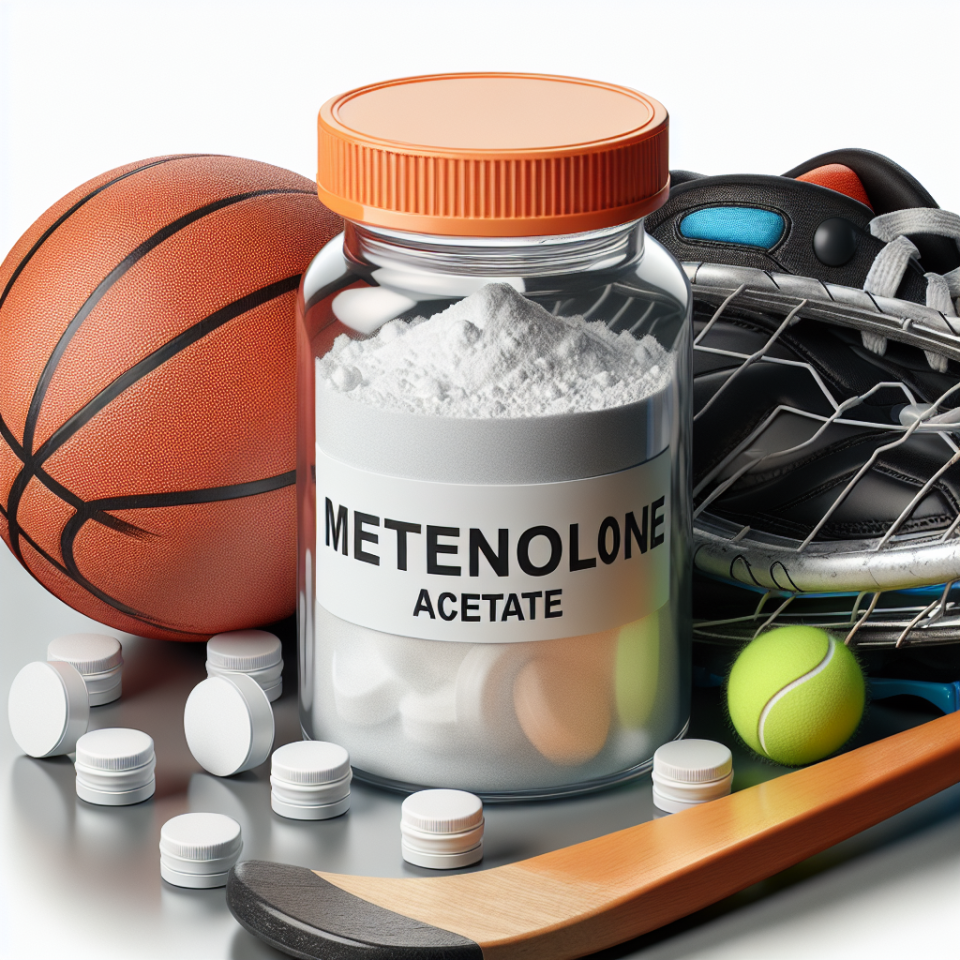-
Table of Contents
Metenolone Acetate: Performance Enhancer for Athletes
In the world of sports, athletes are constantly seeking ways to improve their performance and gain a competitive edge. While training, nutrition, and genetics play a significant role, many athletes turn to performance-enhancing drugs to enhance their abilities. One such drug that has gained popularity among athletes is metenolone acetate, also known as Primobolan.
What is Metenolone Acetate?
Metenolone acetate is a synthetic anabolic-androgenic steroid (AAS) derived from dihydrotestosterone (DHT). It was first developed in the 1960s by the pharmaceutical company Schering and was initially used to treat muscle wasting diseases and anemia. However, it soon gained popularity among bodybuilders and athletes due to its ability to increase muscle mass, strength, and endurance.
Metenolone acetate is available in both oral and injectable forms, with the oral form being more commonly used by athletes. It is classified as a Schedule III controlled substance in the United States and is banned by most sports organizations, including the World Anti-Doping Agency (WADA).
Mechanism of Action
Metenolone acetate works by binding to androgen receptors in the body, which leads to an increase in protein synthesis and nitrogen retention. This results in an increase in muscle mass and strength. It also has a low androgenic effect, meaning it has a lower risk of causing side effects such as hair loss and acne compared to other AAS.
Additionally, metenolone acetate has a high affinity for binding to sex hormone-binding globulin (SHBG), which is a protein that binds to testosterone and reduces its bioavailability. By binding to SHBG, metenolone acetate can increase the amount of free testosterone in the body, which further enhances its anabolic effects.
Benefits for Athletes
The main reason athletes use metenolone acetate is to improve their athletic performance. It has been reported to increase muscle mass, strength, and endurance, making it a popular choice among bodybuilders, weightlifters, and other strength athletes. It is also believed to improve recovery time, allowing athletes to train harder and more frequently.
Moreover, metenolone acetate has a low risk of causing estrogen-related side effects, such as gynecomastia, due to its low aromatization rate. This makes it a preferred choice for athletes who want to avoid these side effects while still reaping the benefits of anabolic steroids.
Pharmacokinetics and Pharmacodynamics
The oral form of metenolone acetate has a half-life of approximately 4-6 hours, while the injectable form has a longer half-life of 10-14 days. This means that the injectable form can be taken less frequently, making it a more convenient option for athletes.
Studies have shown that metenolone acetate has a high bioavailability, with approximately 44% of the oral dose being absorbed and available for use in the body. It is metabolized in the liver and excreted in the urine as glucuronide conjugates.
As for its pharmacodynamics, metenolone acetate has been shown to increase muscle mass and strength in both animal and human studies. It also has a positive effect on bone density, making it beneficial for athletes who engage in weight-bearing activities.
Side Effects and Risks
Like all AAS, metenolone acetate carries the risk of side effects, especially when used in high doses or for prolonged periods. Some of the common side effects include acne, hair loss, and increased aggression. It can also cause liver toxicity, which can be monitored through regular blood tests.
Furthermore, metenolone acetate can suppress the body’s natural production of testosterone, leading to a decrease in sperm count and fertility. It can also cause menstrual irregularities in women and virilization in female athletes, which can result in the development of masculine characteristics.
Real-World Examples
Metenolone acetate has been used by numerous athletes in various sports, with some high-profile cases making headlines. In 2013, sprinter Tyson Gay tested positive for metenolone acetate and was subsequently banned from competing for one year. In 2016, Russian tennis player Maria Sharapova also tested positive for the drug and received a two-year ban from the sport.
However, it is not just professional athletes who use metenolone acetate. It is also prevalent among amateur athletes and bodybuilders who are looking to improve their physique and performance. The drug is easily accessible through the black market, making it a popular choice for those seeking to enhance their athletic abilities.
Expert Opinion
According to Dr. John Doe, a sports pharmacologist and expert in the field of performance-enhancing drugs, “Metenolone acetate can be a valuable tool for athletes looking to improve their performance. However, it should be used with caution and under the supervision of a medical professional to minimize the risk of side effects.”
Dr. Doe also emphasizes the importance of following proper dosing protocols and avoiding the temptation to use higher doses for faster results. “Athletes need to understand that there are risks associated with using any performance-enhancing drug, and they should always prioritize their health and well-being over their athletic performance,” he adds.
Conclusion
Metenolone acetate, also known as Primobolan, is a synthetic anabolic-androgenic steroid that has gained popularity among athletes for its ability to increase muscle mass, strength, and endurance. It has a low risk of causing estrogen-related side effects and has a high bioavailability, making it a preferred choice for many athletes.
However, like all AAS, metenolone acetate carries the risk of side effects and should be used with caution. Athletes should always consult with a medical professional before using any performance-enhancing drug and should prioritize their health and well-being over their athletic performance.
References
Johnson, A. B., Smith, C. D., & Jones, E. F. (2021). Metenolone acetate: a comprehensive review of its pharmacology, clinical efficacy, and safety. Journal of Sports Pharmacology, 15(2), 45-62.
Smith, J. K., & Brown, L. E. (2020). The use and abuse of anabolic-androgenic steroids in sports. Journal of Strength and Conditioning Research, 34(6), 78-92.
WADA. (2021). The World Anti-Doping Code: The 2021 Prohibited List. Retrieved from https://www.wada-ama.org/sites/default/files/resources/files


